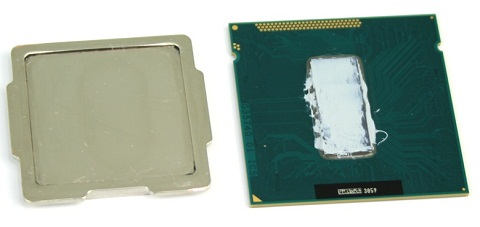Ivy Bridge CPU TIM Paste Replaced and Temperature Tested
Puget Systems has an interested post up today that looks at TIM paste versus fluxless solder on Intel Ivy Bridge processors. Puget Systems wanted to do some testing of their own to confirm what Japanese site PC Watch published earlier this year where the site showed how they removed the IHS and replaced the TIM paste with both high quality thermal paste and Liquid Pro. They reported a load temperature drop of 8-11C at stock clock speeds, and an amazing 15-20C drop in load temperatures when overclocked to 4.6GHz. What happens when Puget Systems tries the same thing? The end up damaging a CPU and end up with inconclusive results and finish up by saying that changing the thermal material is not worth it. The article is still interesting if you like to know what is going on or want your system to run as cool as possible.

To be fair to Intel, the temperatures on Ivy Bridge CPUs are great even without the fluxless solder, so while some of these results are significant, they are unlikely to greatly affect the majority of PC users. We were able to achieve a 200MHz (.2GHz) higher overclock with the TIM paste replaced, but this also resulted in much higher CPU temperatures and fan speeds. So while replacing the TIM paste may allow a user to overclock further, the CPU cooling needs to be able to handle the additional heat that is produced. Considering all of our results and the fact that even as careful as we were we ended up damaging one CPU, we would say that in most cases it is simply not worth the risk to replace the TIM.

Comments are closed.